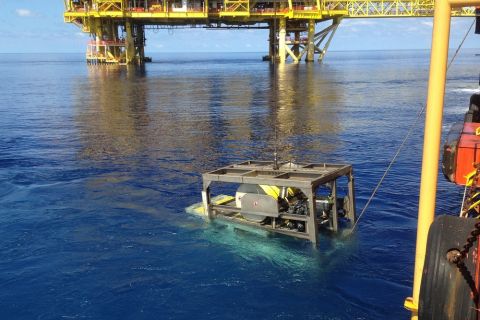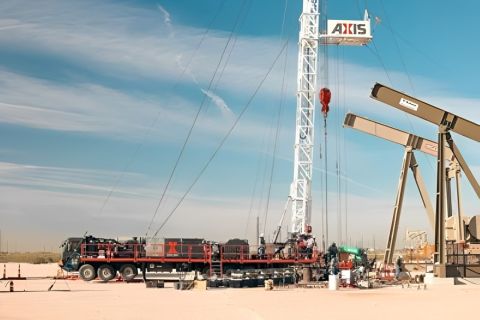A US petroleum industry bright spot of recent years has been the so-called stripper wells that contribute about 1.2 MMbbl/d of oil to the US domestic supply chain. That is “as much as we import from Saudi Arabia,” said Dewey Bartlett Jr., chairman of the National Stripper Well Association.
A stripper well is commonly defined as an oil well producing less than 10 b/d or a natural-gas well producing 60,000 cf or less per day at its maximum rate. The US Department of Energy (DOE) says that more than 400,000 oil stripper wells are responsible for about 18% of US domestic production.
While most stripper wells produce oil, natural gas wells generally face the same challenges, although they are said to be somewhat less expensive to operate. About 296,000 natural gas stripper wells account for more than 1.7 Tcf of natural gas production, equivalent to 9% of natural gas production within the lower 48 states.
Some wonder whether falling prices for petroleum products will be a setback for work done in recent years to tap into these petroleum resources. From 1994 through 2006, said the DOE, “on average each year more than 3% of marginal wells were plugged and abandoned.” At that attrition rate a total of more than 177,000 wells went off line, or about 42% of all wells operating in 2006.
Bartlett, who is also president of Keener Oil & Gas Co. and a third-generation oil and gas producer, said the current price of oil — about US $45/bbl at press time — is enough to sustain current production. However, the price may not be enough to generate capital needed to drill new wells or purchase innovative technology that could increase the percentage of oil captured from a reservoir.
Yet in early December 2008 Bernstein Research analysts Ben Dell and Neil McMahon were reported in businessweek.com as being less sanguine about prospects for stripper wells to remain in production amidst depressed prices. Looking at wells producing 15 b/d or less, Bernstein feared as much as 1.3 MMbbl of oil could come off the market, engendering more impact in the US than any foreseen OPEC production cuts.
“In the past, when prices got low,” said Bartlett, “wells were lost. Once one of these wells is plugged, access to the reservoir is lost. It’s financially unfeasible to do a re-drill.”
A less radical response to low petroleum prices is to do a “shut-in.” Equipment is broken down and taken away, “but the well bore remains viable for a period of time,” said Bartlett. “Yet if a shut-in extends for a lengthy period, conditions deteriorate. Neither plugging nor shutting-in are good options.”
When a well is shut in, besides loss of equipment that would be prohibitively expensive to replace, the lease typically is forfeited. The DOE said oil prices would have to remain elevated for years to justify bringing many marginal wells back into production.
It is also the case that at current price levels, if a stripper well has a mechanical failure or experiences some calamity that necessitates reinvestment, Bartlett said, “such as tubing replacement, it’s likely the operator will choose to do a shut-in until prices improve.”
If marginal stripper wells are being shut in or plugged, and new wells aren’t being drilled, the prospects for maintaining current production levels begin to darken. “I don’t think that the level of oil production [from stripper wells] has increased in recent years,” said Bartlett, “but the rate of decrease has lessened. The amount of natural gas produced has increased. To maintain current production levels, we need to have at least as much drilling activity as we’ve been experiencing the last few years.”
One primary concern of Bartlett’s is that existing well bores be kept undisturbed and viable so that there would be access to the reservoir in the future without great capital expense. As he pointed out, normally when a new pool of oil is discovered, the prevailing modes of production bring in less than 50% of the oil in the reservoir, even with waterflooding and chemical treatments.
“But over the years,” Bartlett said, “when prices are stable we see new technologies introduced that allow more oil to be produced out of existing reservoirs.” It would be a shame if the industry and the US economy were preemptively cut off from this valuable resource.
Recommended Reading
Exclusive: Silixa’s Distributed Fiber Optics Solutions for E&Ps
2024-03-19 - Todd Chuckry, business development manager for Silixa, highlights the company's DScover and Carina platforms to help oil and gas operators fully understand their fiber optics treatments from start to finish in this Hart Energy Exclusive.
CERAWeek: AI, Energy Industry Meet at Scary but Exciting Crossroads
2024-03-19 - From optimizing assets to enabling interoperability, digital technology works best through collaboration.
Cyber-informed Engineering Can Fortify OT Security
2024-03-12 - Ransomware is still a top threat in cybersecurity even as hacktivist attacks trend up, and the oil and gas sector must address both to maintain operational security.
Forum Energy Signs MOU to Develop Electric ROV Thrusters
2024-03-13 - The electric thrusters for ROV systems will undergo extensive tests by Forum Energy Technologies and SAFEEN Survey & Subsea Services.
Axis Energy Deploys Fully Electric Well Service Rig
2024-03-13 - Axis Energy Services’ EPIC RIG has the ability to run on grid power for reduced emissions and increased fuel flexibility.





